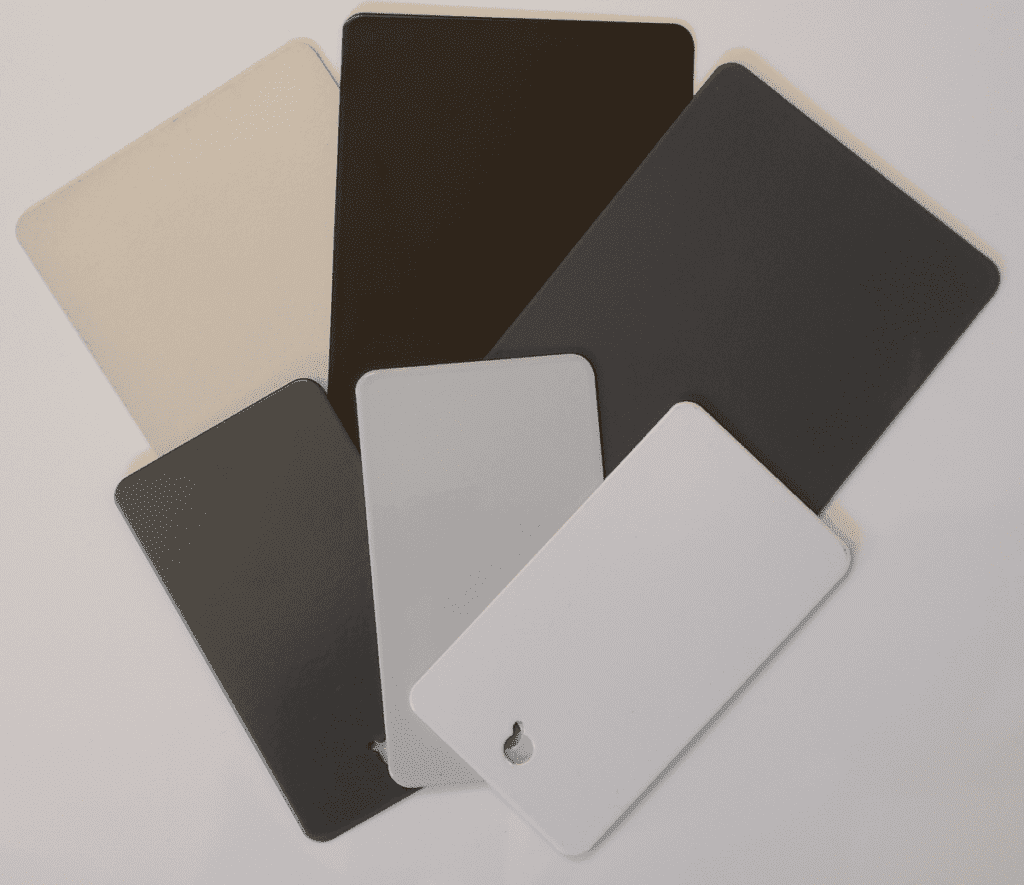The Finishing Touch: Finish Options for Metal Components
Powder coating or anodizing your parts may be an aesthetic consideration, a functional need, or completely optional based on the metal alloy you specify.
Powder Coating

Our most requested finish is powder coating. The basic powder coating process is three steps:
1. Preparation and cleaning
2. Powder application
3. Powder curing.
Prior to powder coating, we help you evaluate your parts and their intended use to decide if a chemical wash is sufficient, or if sandblasting (also called media blasting) and chemical wash are needed.
Sand Blasting
Sand blasting will remove all grease, oil, rust, and mill scale.
After blasting, the metal surface will have a fine profile texture or “tooth.” The tooth increases powder coat adhesion by giving the powder significantly more surface area to adhere to.
We recommend sand blasting where high durability is needed and for all outdoor applications.
Powder Application
Next, the clean parts receive the powder application. An electrostatically charged powder spray gun is used to apply the dry powder onto the part.
Careful attention is needed to ensure that all surfaces are evenly painted. All threaded holes, inserted hardware, studs, etc. are masked to ensure they are functional after the powder coating is cured.
Powder Curing
Finally, the part is heated in an oven to activate the powder and cure the finish. This creates a hard, durable coating.
Color Options
Powder coating is available in many colors, with both stock colors and custom color matches available. Custom color matching can be expensive for small runs, but for longer runs can be the perfect match for your brand.
Anodizing
Anodizing is an electrochemical process that creates a clear or colored oxide layer on the surface of the part. Anodizing provides a durable and corrosion resistant surface.
Although several nonferrous alloys can be anodized, at Fuse Metal, we primarily anodize aluminum. Many colors are available, with clear, blue, red, black, purple, and green being the most popular.
Please enquire with us so we can help identify the best process and type of anodizing for your needs.
No Finish
Sometimes, the best finish is no finish at all. If choosing stainless steel or aluminum alloys, your application might be best with no finish of any type.
We often explore moving from steel to a nonferrous alloy to reduce the cost of the final part by removing the powder coating cost. If you are looking to reduce costs, this might be a good option for you.
Our team of design engineers and estimators are available to help review your project and make recommendations to reduce total project cost by evaluating all these variables. Please contact us or fill out the form below if we can help with your project.